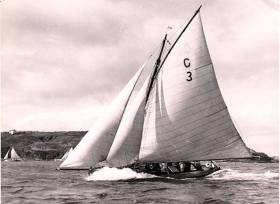Displaying items by tag: Ette
Ireland’s Contribution to the International Classic Wooden Boat Movement
The traditional and classic wooden boat-building movement is gaining momentum in many parts of the world. It can be part of educational and training schemes which provide skills and purpose in life, usually for young people but also for older folk seeking a new and very absorbing interest. Or it could be to preserve an indigenous boat type whose very survival is at risk. Then again, it may be for the simple pleasure of creating something which produces a tangible result from a satisfying personal project, or a worthwhile community effort. Whatever the reason, Irish sailing’s long history enables it to make a unique contribution to today’s proliferation of classic and traditional newly-built or restored craft emerging from workshops large and small in many parts of the world. W M Nixon looks at some aspects of a fascinating trend.
The half century or so between 1890 and 1945 will be seen by most historians as a period of exceptional global hostility, certainly as measured by the number of wars which were fought during it. So it’s remarkable that an activity like recreational sailing, which needs peaceful conditions to thrive, should have developed so much during that turbulent time.
Admittedly much of the development took place in the “Golden Era” between 1890 and the outbreak of World War I in 1914. But progress was being made in sailing for much of the rest of the period despite the often unfavourable conditions. And for Ireland, that historic time of progress is being reflected today in the number of historic designs for Irish classes which are now first choice for boat-building schools, and other special projects, in many countries including Ireland itself.
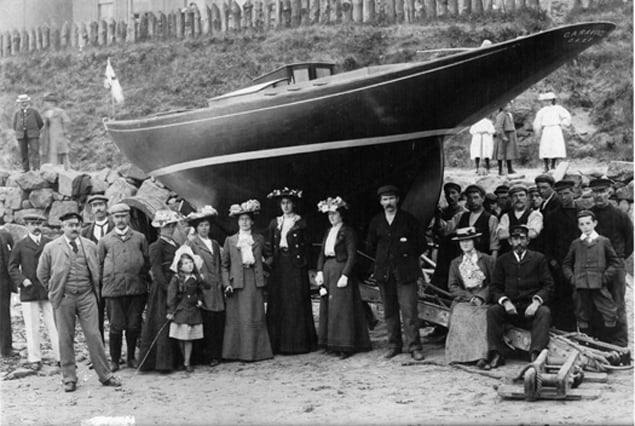 The Alfred Mylne-designed Dublin Bay 21 Garavogue, new-built and ready for launching by James Kelly of Portrush in 1903. Photo courtesy Robin Ruddock
The Alfred Mylne-designed Dublin Bay 21 Garavogue, new-built and ready for launching by James Kelly of Portrush in 1903. Photo courtesy Robin Ruddock
During that half century between 1895 and 1945 when many new local one design classes appeared, Ireland had a pioneering role, as the One Design concept had been first promoted by Thomas “Ben” Middleton’s Water Wags in Dublin Bay in 1887. Thus it was always an innovation which had special resonance in the Irish context, an ideal which it seemed only natural to follow.
Then too, the Royal Alfred YC of Dublin Bay had been promoting the virtues of amateur sailing since 1870 and earlier, so the level playing field provided by One-Designs was a natural follow-on for continuing such enthusiasm. But sustained and long-time support for a particular One-Design type – once it had proved itself satisfactory for the waters on which it sailed – also had much to do with the geography and social structure of Irish sailing.
Put simply, most sailors of the new and growing one design classes in Ireland lived in close proximity to where their boat were based and raced. In contrast elsewhere, thanks to the comprehensive 19th Century railway systems very effectively serving large conurbations such as London and Paris - and to a lesser extent Glasgow and New York - when the weekend was over, many owners and crews headed back to town, sometimes over quite long distances from their boat’s home port.
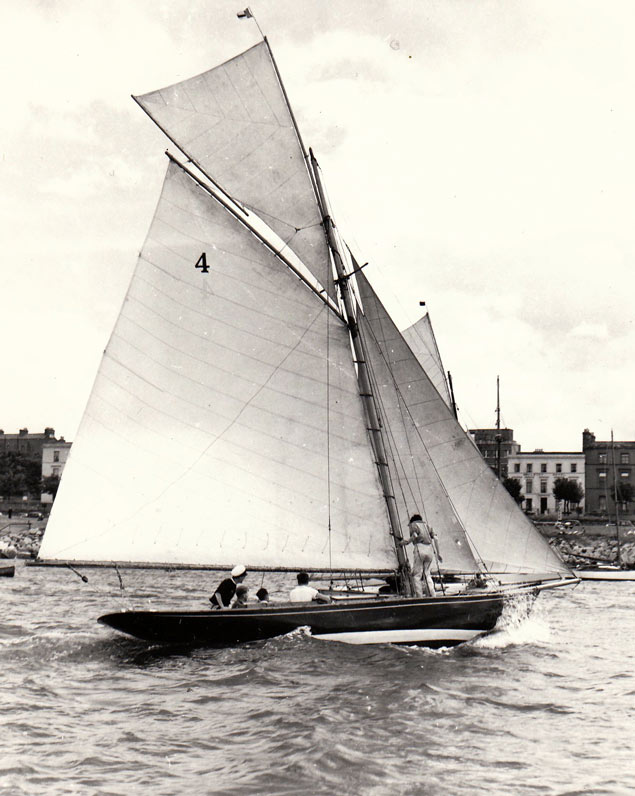 Garavogue in the final stages of a race when the finishes were still within Dun Laoghaire Harbour. Her owner and crew would have lived within easy reach of the harbour, and the comfortable social bonds within the DB21 class contributed to its long life from 1902 to 1986.
Garavogue in the final stages of a race when the finishes were still within Dun Laoghaire Harbour. Her owner and crew would have lived within easy reach of the harbour, and the comfortable social bonds within the DB21 class contributed to its long life from 1902 to 1986.
But in Ireland, whether it was Cork, Dublin or Belfast, the boat was always nearby, you might meet your fellow sailors quite often during the working week, and evening racing was an important part of the programme. In the greater Dublin area in particular, the cohesive nature of society meant that once a class was popularly established, it thrived so much that some boats from the late 1890s and early 1900s are still in existence and actively racing today.
This means that when a boat-building school seeks a meaningful design which will give added depth to their activities, they know they only have to turn to the wide selection of historic Irish classes to find a boat of suitable size which will have an element of international recognition, it will give those building her an encouraging sense of connection to the past for instructors and trainees alike, and at a practical level, they know there’ll be a diligent class measurer to keep them on track as the job progresses.
A further alternative technical element is added when the no-longer-seaworthy old hull of a revered classic is acquired, and it is then patiently analysed in a process which is a mixture of dissection, re-build and re-creation. Either way, whether building from scratch, or re-creating through various levels of re-building, the learning process is given many useful extra facets.
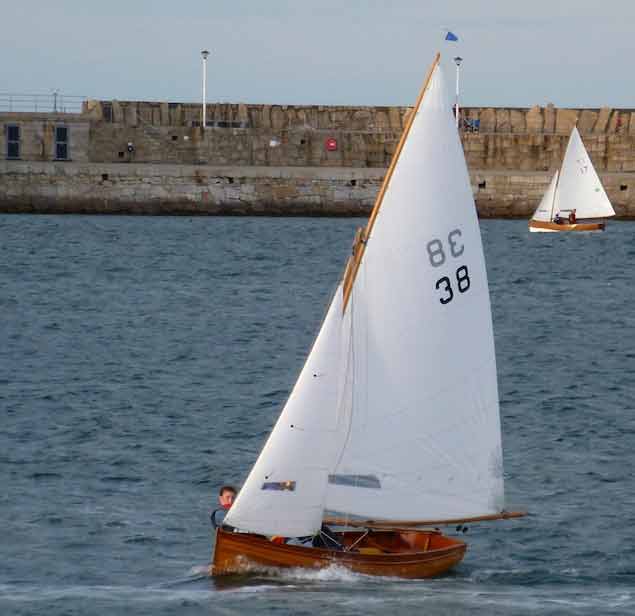 Water Wags in Dun Laoghaire Harbour. Founded as a class of 13-footers in 1887 and re-born in this larger 14ft 3in version by designer Maimie Doyle in 1900, they have become one of the most popular Irish classic designs for boat-building schools. Photo: W M Nixon
Water Wags in Dun Laoghaire Harbour. Founded as a class of 13-footers in 1887 and re-born in this larger 14ft 3in version by designer Maimie Doyle in 1900, they have become one of the most popular Irish classic designs for boat-building schools. Photo: W M Nixon
And as Irish sailors were not shy in asking designers of international repute to create their new One Designs for them, these re-build or new-build projects may have the added lustre of classic stardom with their undoubted historical significance. Thus in recent years while we may have had new boats being built to the old designs of Irish designers such as Maimie Doyle, Hebert Boyd, John B Kearney and O’Brien Kennedy, equally builders from abroad have been in touch with class associations and other sources in Ireland in order to re-create boats to the designs of William Fife and Alfred Mylne of Scotland, and Morgan Giles of England.
Thus at the moment we have Water Wags being built in Spain and America, Dublin Bay 24s are at various stages of being re-created in Spain, America and France, in France they have also built a Howth 17, another Water Wag and a Shannon One Design, it’s said there’s a Howth 17 being built in the boat-building training school attached to the US Naval Academy in Annapolis, and not surprisingly we hear of enquiries made of Irish class association from those havens of DIY boat-building enterprise, Australia and New Zealand.
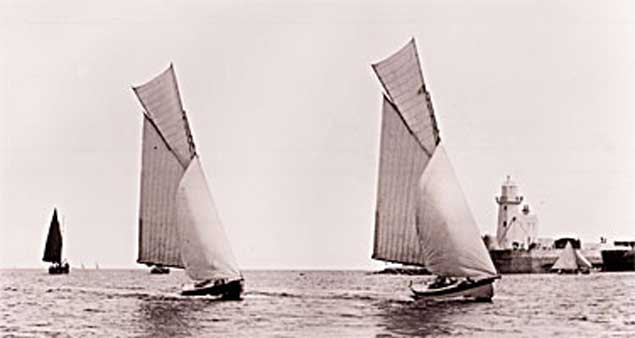 Two of the new Howth 17s in their first season in 1898, before sail numbers had been allocated.
Two of the new Howth 17s in their first season in 1898, before sail numbers had been allocated.
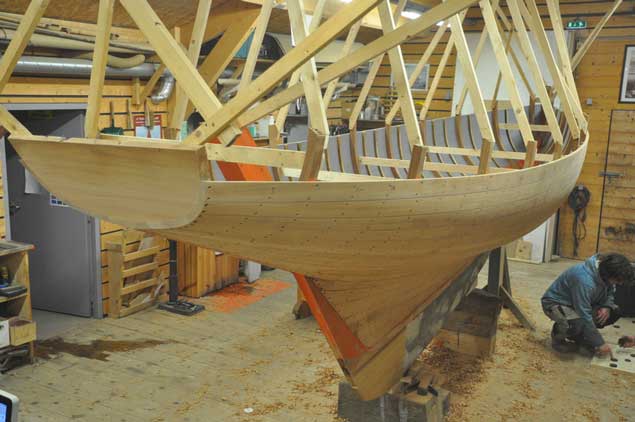 The Howth 17 Orla under construction at the Skol ar Mor boat-building school in France, May 2017
The Howth 17 Orla under construction at the Skol ar Mor boat-building school in France, May 2017
In fact, if we look at the range of living or still very well remembered classes in Ireland which have the potential to make designs available for such classics projects, the choice is remarkably comprehensive in size and type. They range through the 14ft IDRA 14s (O’Brien Kennedy, 1946), the 13ft and now 14ft 3ins Water Wags (R A MacAllister 1887 & Maimie Doyle 1900), the Castletownshend Ettes of the 1930s come in at 16ft, at 17ft you have both the Shannon One Designs (Morgan Giles 1922) and the Mermaids (John Kearney 1932), at 18ft we’re already into keelboats and the Belfast Lough Waverleys (John Wylie 1902), move up to 22ft and you have the Linton Hope-designed Fairy Class (1902) on both Belfast Lough and Lough Erne, and there were also the Fife-designed Belfast Lough Class IIIs of 1896, and then at 22ft 6ins there are the Howth 17s by Herbert Boyd (1898).
Up at 25ft there are the Glens (Alfred Mylne, 1945) in Dun Laoghaire Harbour and on Strangford Lough, and also on Strangford Lough at 28ft 6ins there are the Rivers (Alfred Mylne, 1920). Moving towards the 30-31ft mark, we have the Cork Harbour One Designs (William Fife 1896) and the Dublin Bay 21s (Alfred Mylne 1902), and finally above that, with all of them around the 37ft 6ins LOA size, are the Belfast Lough Class I (Fife 1897), the Dublin Bay 25s (Fife 1898) and the Dublin Bay 24s (Mylne, 1938).
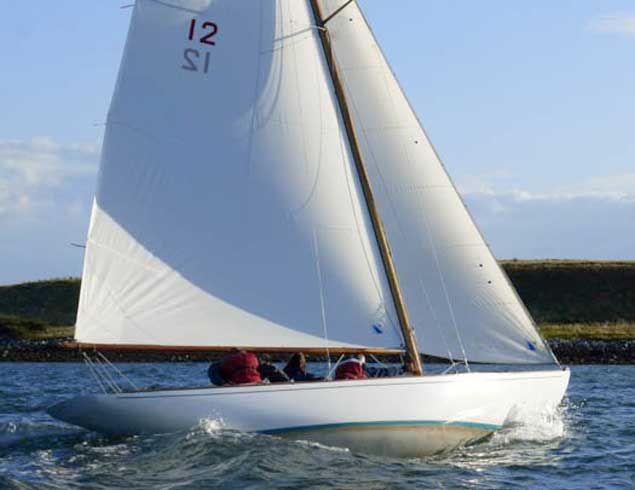 Strangford Lough River Class – designed by Alfred Mylne in 1920, they are believed to be the world’s first Bermudan-rigged One Design. Photo: W M Nixon
Strangford Lough River Class – designed by Alfred Mylne in 1920, they are believed to be the world’s first Bermudan-rigged One Design. Photo: W M Nixon
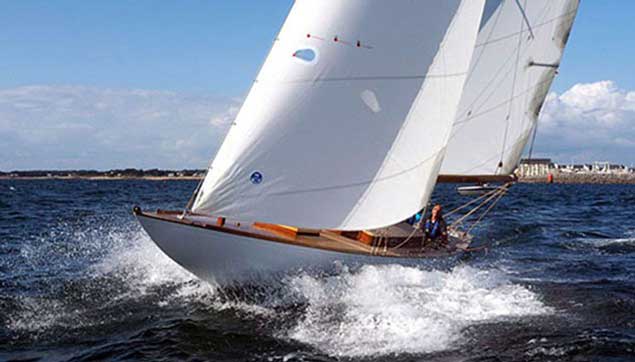 The Dublin Bay 24 Periwinkle, an Alfred Mylne design of 1938, was restored in France
The Dublin Bay 24 Periwinkle, an Alfred Mylne design of 1938, was restored in France
The attraction of such a good selection is that anyone minded to re-create a classic with a distinguished design and sailing provenance can choose a boat of manageable size from the range available in Ireland. A genuine classic doesn’t have to be a biggie. Keeping it manageable – and in many cases keeping it comfortably trailerable – is the secret of a harmonious project, and the eclectic list of classic projects available for sourcing in Ireland not only offers boats of every size and type up to 40ft, but you can come to Ireland and absorb the atmosphere of the places where the idea of the boat was first conceived, and meet current enthusiasts for sailing the boat which gives a vibrant connection both to the present and the past.
Don’t assume, though, that though it may be happening abroad, there’s nothing going on in Ireland. On the contrary, the possibilities of the Irish classics have been exploited every which way. Serial classics enthusiast Hal Sisk of Dun Laoghaire has instigated so many projects that it’s difficult keeping track, but his CV includes the Peggy Bawn, new Water Wags built in classic style, glassfibre Colleens from an 1897 design, and currently the building of a Dublin Bay 21 from the original ballast keel upwards by Steve Morris of Kilrush, utilising multi-skin construction based on laminated frames.
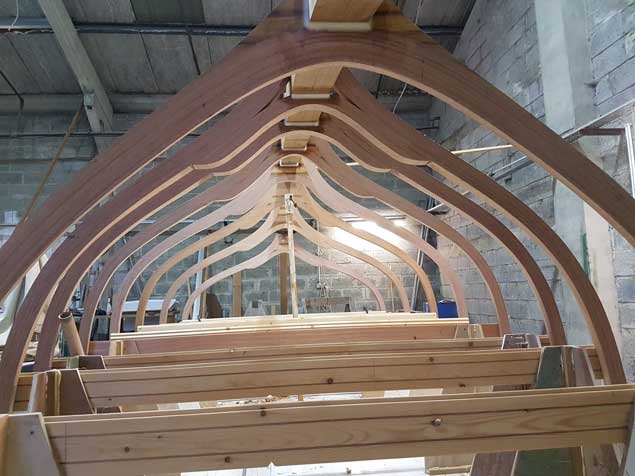 New life for the 1902-designed DB 21 Naneen in Steve Morris’s workshop in Kilrush. Photo: Steve Morris
New life for the 1902-designed DB 21 Naneen in Steve Morris’s workshop in Kilrush. Photo: Steve Morris
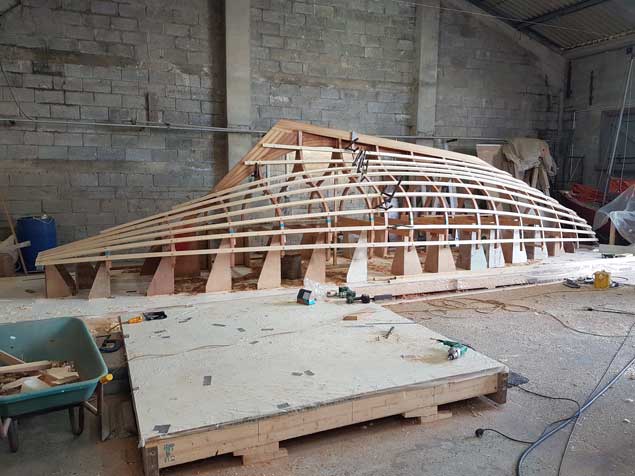 The construction method may be new, but that’s undoubtedly the classic hull of a DB 21 emerging in Kilrush. Photo: Steve Morris
The construction method may be new, but that’s undoubtedly the classic hull of a DB 21 emerging in Kilrush. Photo: Steve Morris
As for Jimmy Furey on the Roscommon shores of Lough Ree, his examples of completely traditional classic style construction of Shannon One Designs and Water Wags – working most recently with Cathy MacAleavey – results in what can only be described as Chippendale work, while down in Ballydehob in West Cork there’s a whole nest of classic restorers, with Rui Ferreira setting quite a pace with new Ettes, a restored Kim Holman Stella, and a much-revived Howth 17.
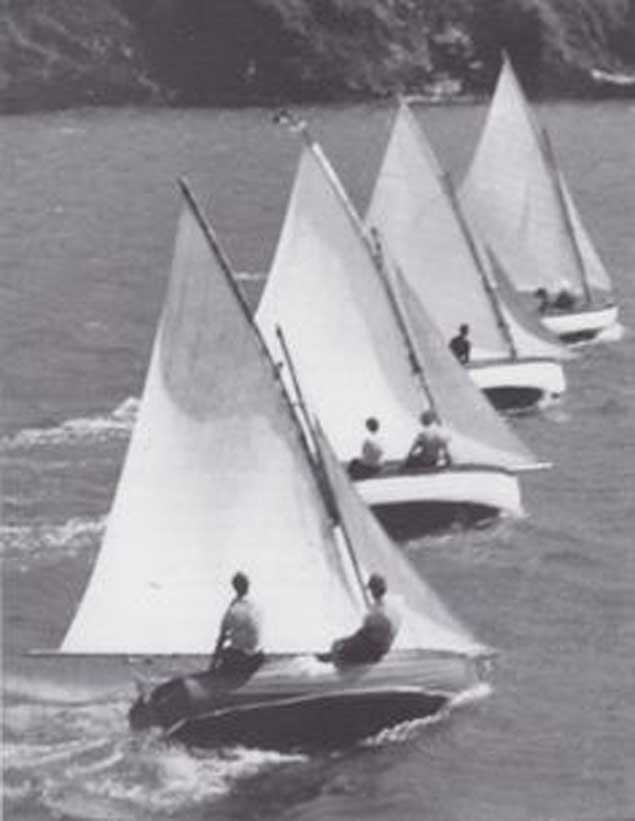 The Castlehaven Ette Class – Rui Ferreira has been building to this design
The Castlehaven Ette Class – Rui Ferreira has been building to this design
Over on the east coast, when times are hectic in classic boatbuilding, people have found that John Jones over in Anglesey does a very good line in stylish clinker construction, but the venerable Howth 17s – not all of which are operated on large budgets – are currently being kept going by Larry Archer of Malahide, who has a workshop up-country where three of these golden oldies are currently receiving the TLC.
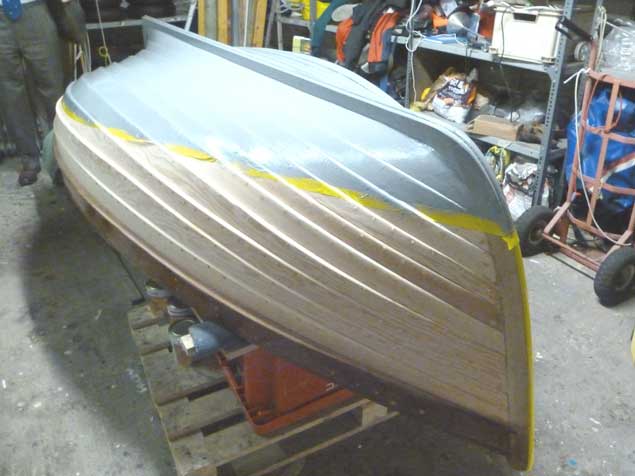 Asgard’s dinghy was re-created in classic style by Larry Archer. Photo: W M Nixon
Asgard’s dinghy was re-created in classic style by Larry Archer. Photo: W M Nixon
Larry is something of a renaissance man in the boat maintenance, repair and building arena, as he is right up to speed with everything to do with glassfibre, yet when Pat Murphy and his group got together to re-create Asgard’s dinghy, it was Larry Archer who delivered the goods, beautifully built in classic clinker style.
As to his present work with the Howth 17s, that is part of a broader project being driven by Ian Malcolm and fellow Seventeen sailors, who may be looking at a class of 23 boats in the foreseeable future. Apart from the new boat built last year in France and the boat reputedly under construction in Annapolis, in a secret workshop on the Hill of Howth, yet another new Howth 17 is quietly under construction to a very high standard.
Such things take time, as the group in Clontarf Y & BC demonstrated when they set out to build a classic timber IDRA 14 for the class’s 70th Anniversary in 2016. They allowed themselves plenty of time, but it was tight enough in the end, yet by the successful conclusion a special bond had been formed among the build team in their Men’s Shed enterprise. It said everything about the deeper benefits of getting involved in a manageable project using time-honoured methods and traditional materials to create something of lasting beauty, value and utility.
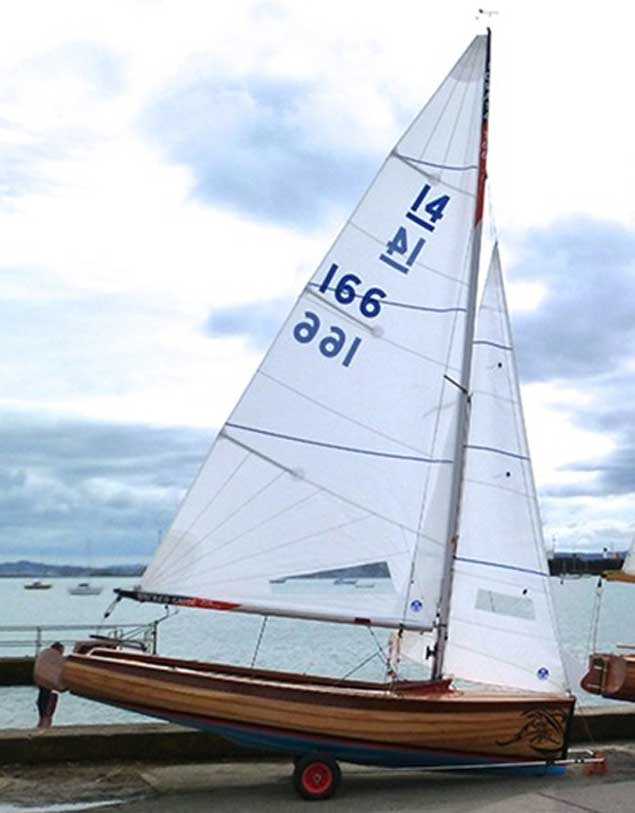 The new IDRA 14 ready for launching at the class’s 70th Anniversary Regatta at Clontarf. Photo: W M Nixon
The new IDRA 14 ready for launching at the class’s 70th Anniversary Regatta at Clontarf. Photo: W M Nixon


























